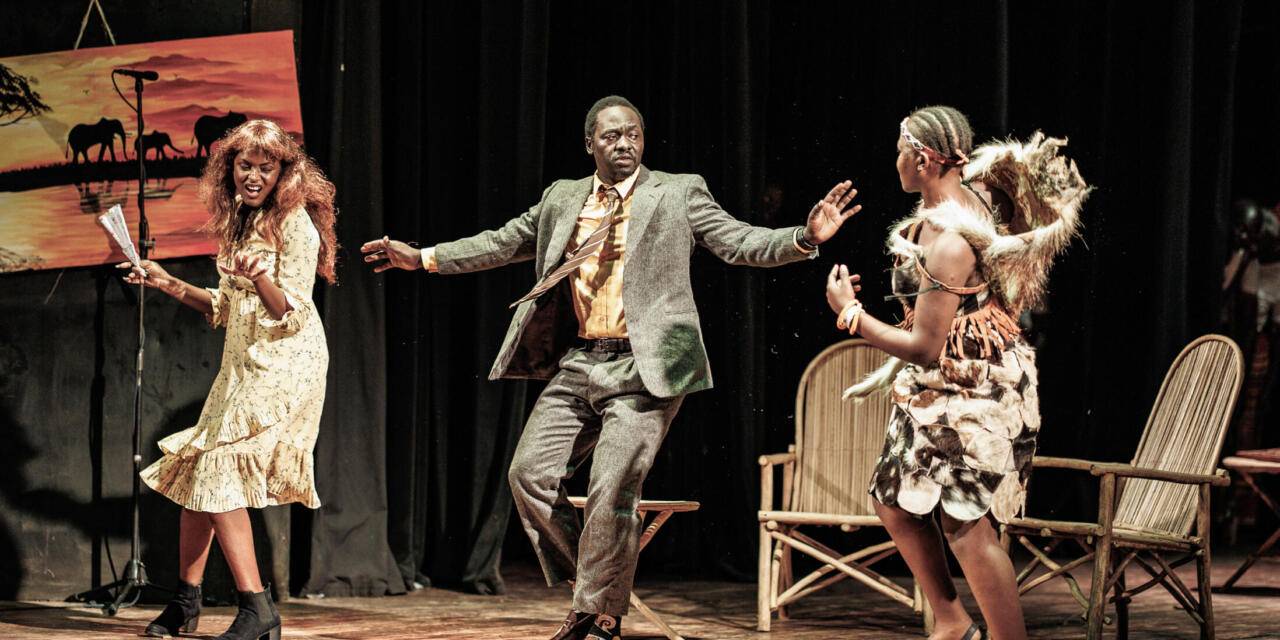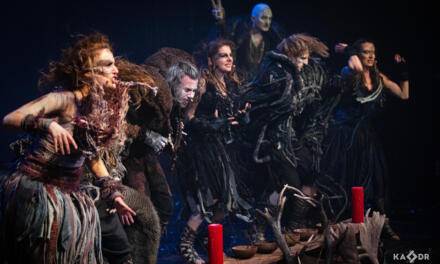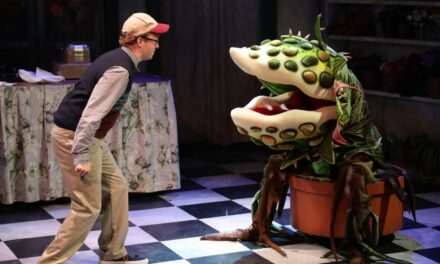“The African tradition, lived and lives in the thick of battle of life, here and now. The African is totally this-worldly and not at all other-worldly. His religion, for which he has no term, is the full participation of all sectors of the community: Man, Nature and Spirits in the life-process. In the rituals at birth and death, at marriage, at the commencement and at the end of battle, at the beginning of the rains, at harvest and during the hunt, etc., the philosophy of life of the people are sung and danced. The world- view is celebrated and confirmed.” – Okot p’Bitek in Artist the Ruler
Classics
Echoes of Lawino is an adaptation of Okot p’Bitek’s Song of Lawino and Song of Ocol. The play was directed by Alex Kitaka and produced by Okere City, a community in Otuke, Northern Uganda. I want to describe Okere to those unfamiliar with this community and their vision, and I find it apt to begin with a quote from the classic poetry book Artist the Ruler by Okot p’Bitek. Okere City has demonstrated their commitment to integrating cultural expression with lived experiences, especially in a context where colonialism has severed these connections. The production by Okere City is particularly intriguing because it is situated within the cultural context in which the original Song of Lawino/Ocol was created. They performed the songs in the production untranslated, while the dialogue was in English. The cast from Okere performed for both themselves and the audience, engaging with them at Uganda’s national theatre. Echoes of Lawino subtly presents powerful symbols, offering nuanced perspectives on the themes explored by Okot p’Bitek, such as gender roles, change, development, cultural assimilation and violence.
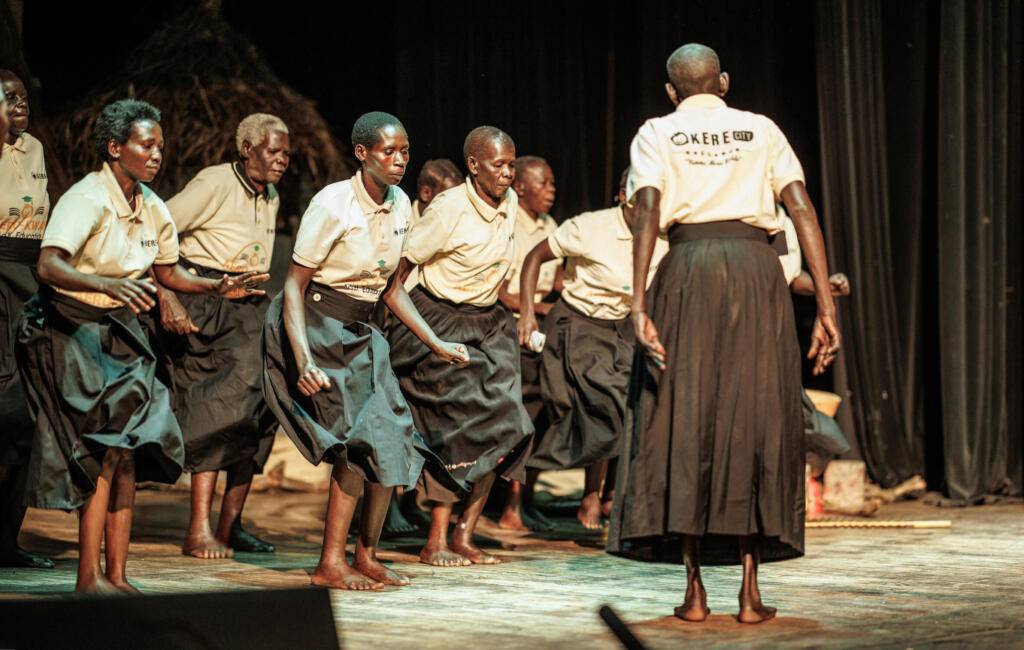
Okere City performers on stage in Uganda (Photo: Jjumba Martin)
Dialogue
The play is an adaptation, and one might not notice significant changes in the portrayal of the epic or the dialogue itself. However, the play takes a sharp turn, almost breaking the fourth wall, as Ocol steps out and experiences an epiphany. He realizes that his life has been misguided and immediately renounces his previous path from a pulpit. This moment jolts the audience, who have become desensitized to the political aspects of the text due to overexposure because while Okot p’Bitek’s work has now achieved canonical status and is part of literature curricula at various educational levels, interpretations that directly address the politics embedded in the text—such as cultural assimilation, gender roles, and development—are seldom realized. This production enables a deeper analysis that transcends technical aspects like continuity and plot flow, delving into the profound impact of the transformative moment envisioned by Okot p’Bitek.
Culture and Politics
For Okot, the artist and politics are inseparable. In his essays, particularly Artist the Ruler, he presents a series of ideas on the relationship between culture and politics. Although the interaction between art and politics may seem abstract on a macro scale, the artist, through their work, can challenge the existing political landscape and create a new one. This is precisely what Song of Lawino sought to achieve. The “new” politics I refer to here is not new in the sense of novelty, but it questions and dismantles the prevailing status quo during a time when African cultural expression faced (and still faces) violent and incentivized assimilation. Okot p’Bitek ingeniously encoded these tensions into his work. At its core, the work carries political aspirations, albeit metaphorically and allegorically. However, in this production, Ocol’s voice resounds as he denounces his previous views on Westernization as progress.
Q&A
He critiques the perspectives of development programs and the work of international non-governmental organizations (INGOs) in similar contexts to his and Lawino’s. The author calls upon Africans to reclaim agency in shaping their lives and environments. Initially, this scene may have felt disruptive because it deviates from the expected plot progression. Ocol’s epiphany seems sudden, and his denouncement stands out starkly within the carefully constructed narrative structure.
During the Q&A session after the play, the director addressed the discrepancy, primarily emphasizing its necessity. However, it is unlikely (this is a review and I’m guessing here) that this scene was created purely for aesthetic purposes or to merely authenticate Ocol’s transformation. Viewed from an aesthetic standpoint, it stands out too much and when critiqued from a point of character development it’s too sudden for me to believe Ocol. But it succeeds in utilizing the environmental aesthetics of Song of Lawino—such as the dialogue leading up to it, the juxtaposition of images related to dress and environment, and the cultural conflicts and eventual reunion of Ocol and Lawino—to deliver a timely political message.
Analysis
My analysis of the Echoes of Lawino has evolved from purely considering aesthetic elements to delving deeper into the ideas that permeate the production, its characters, and their motivations for change or resistance to change. This work offers insights into the experience of assimilation and the potential consequences of such exposure. Through the experiences of each character—Ocol, Lawino, and Clementine—we gain a better understanding of the processes involved.
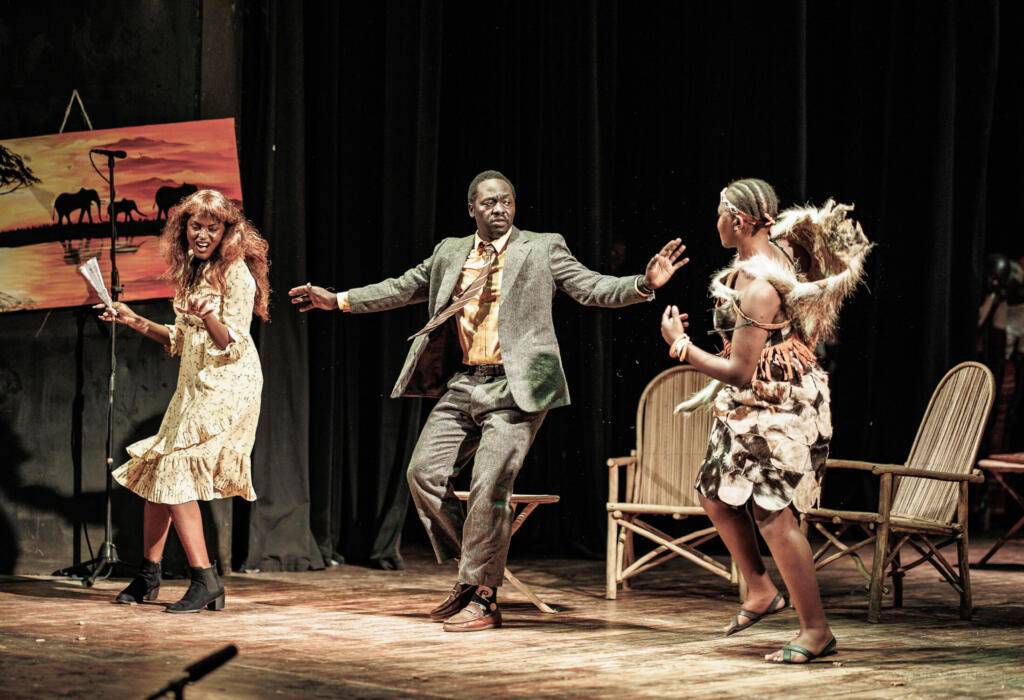
A scene from the stage production of Echoes of Lawino (Photo: Jjumba Martin).
Ocol is driven by the concept of extreme progress, aiming to transcend his cultural roots. He discards his attachment to a culture he deems aesthetically uncivilized. He changes his dress, language, rituals, food, and drinks to adopt a more aesthetically appealing presentation. His desire is driven almost to a larger extent by eroticism, seeking a partner who embodies his pursuit of ultra-progress. In this production, even after realizing that his initial transformation was superficial, Ocol surpasses Lawino’s critique by agreeing with her. His reverse metamorphosis grants him a clarity that Lawino can only aspire to.
Cultural Identity Crisis
Lawino’s identity is firmly rooted in a specific historical context. She is presented in attire that situates her within the imagined pre-colonial Acholi culture even as viewed today. As a purist, she is unyielding in her refusal to even entertain the notion of embracing new cultural expressions. She struggles to comprehend a life outside the confines of her known traditions. This is evident in her reaction to Ocol’s process of change, beginning with anger and culminating in a desperate plea for him to reconsider his actions. Lawino cannot envision a life without Ocol; her words about power and allure become somewhat hollow. Ocol no longer desires her because she no longer embodies the personification of ultra-progress. Lawino represents the antithesis of that ideal. Deeply steeped in tradition, she is willing to relinquish agency to be with Ocol.
Outside of tradition, she lacks personal motivations, erotic desires, and curiosity. Lawino realizes that she is merely an image, a symbol. Clementine, on the other hand, is portrayed as a caricature, existing solely as a perceived and described character. Although we never witness Clementine’s song in the production, she holds the potential to help us understand the gender and cultural politics embedded in this epic. Is she merely a female version of Ocol? Or is there something more driving this change? Is her empathy for Lawino genuine?
Characters
Echoes of Lawino introduces a captivating character, Opio, who represents a child caught in the midst of this cultural conflict. He grapples with the conflicting voices he hears but his costuming does not provide clear indications of whether he has embraced Westernization like Ocol or remains grounded in Lawino’s traditions. Opio dutifully performs all the chores assigned to him, including those that go against traditional gender roles upheld by Lawino. In addition, he grinds millet, cooks, cleans the home, and even assists Clementine with her makeup, while also being relied upon by Ocol for various errands. Opio diligently serves both sides, despite being violently pulled back and forth between Ocol and Lawino. He becomes the collateral damage in this cultural war, yet he continues to care for and serve his family, even when they themselves are unsure of their own identities. Thus, Opio symbolizes the resilience and adaptability of those caught in the midst of these cultural clashes. He navigates the tensions placed upon him by both sides, striving to create a reality that eases the burden on his shoulders.
Traditions
When considering Okot p’Bitek’s perspective on African tradition, it becomes evident that change is inevitable. If African tradition is lived in the midst of the battle of life, then Lawino is not the character to focus on, as she refuses to acknowledge the possibility of change. Similarly, Ocol negates everything about himself to accommodate the other, but his transformation is ultimately revealed to be superficial. Opio and Clementine, however, require a more nuanced examination, as their experiences shed light on the agency of individuals in this exchange of aesthetics and epistemology.
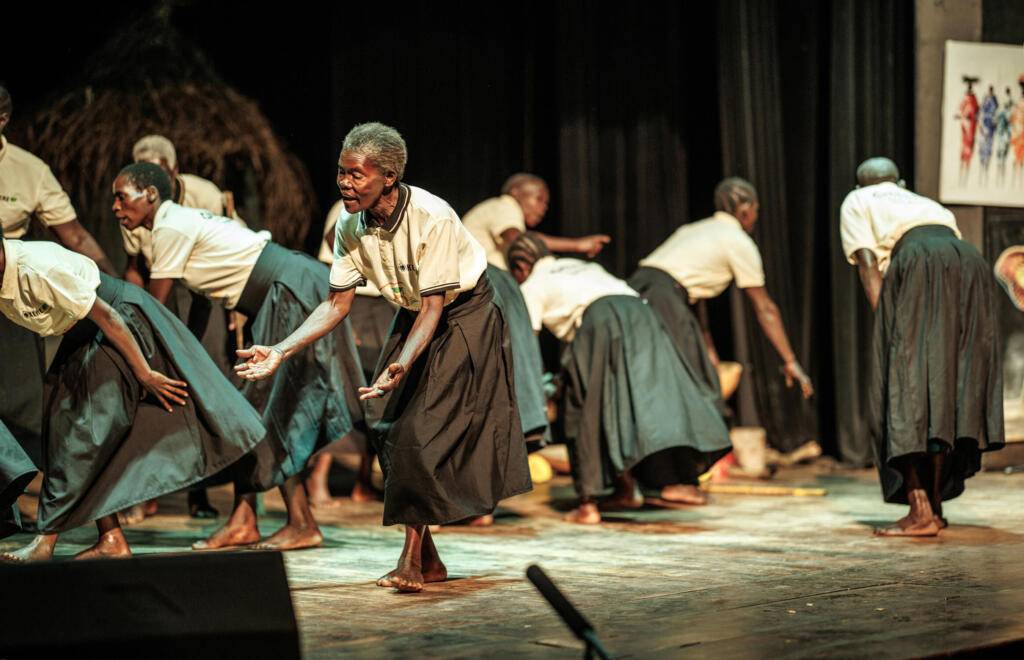
The songs in Echoes of Lawino were in vernacular while the dialogue was in English. (Photo: Jjumba Martin).
Observing these characters brought to life within the world that Okot p’Bitek constructed for them reveals the significance of their transformations. The unresolved cultural violence that burdens Okot’s work finally erupts in that unexpected political tangent. Both within the fictional play and in objective reality, it creates a rupture. While I personally appreciate plot congruence, I recognize the authenticity and necessity of this scene. It exists because it simply must; challenging the audience’s preconceived notions and provoking thought and introspection.
Powerful Adaptation
In the end, Echoes of Lawino serves as a powerful adaptation that goes beyond a faithful reproduction of the original text. It takes risks, introduces new dimensions, and challenges the audience to confront the political implications embedded within the story. By intertwining cultural expression with lived experience, Okere City and the production team have created a thought-provoking piece of art that not only honors Okot p’Bitek’s legacy but also pushes the boundaries of discourse surrounding cultural assimilation, gender roles, and societal change.
This post was written by the author in their personal capacity.The opinions expressed in this article are the author’s own and do not reflect the view of The Theatre Times, their staff or collaborators.
This post was written by Trevor Mukholi.
The views expressed here belong to the author and do not necessarily reflect our views and opinions.

